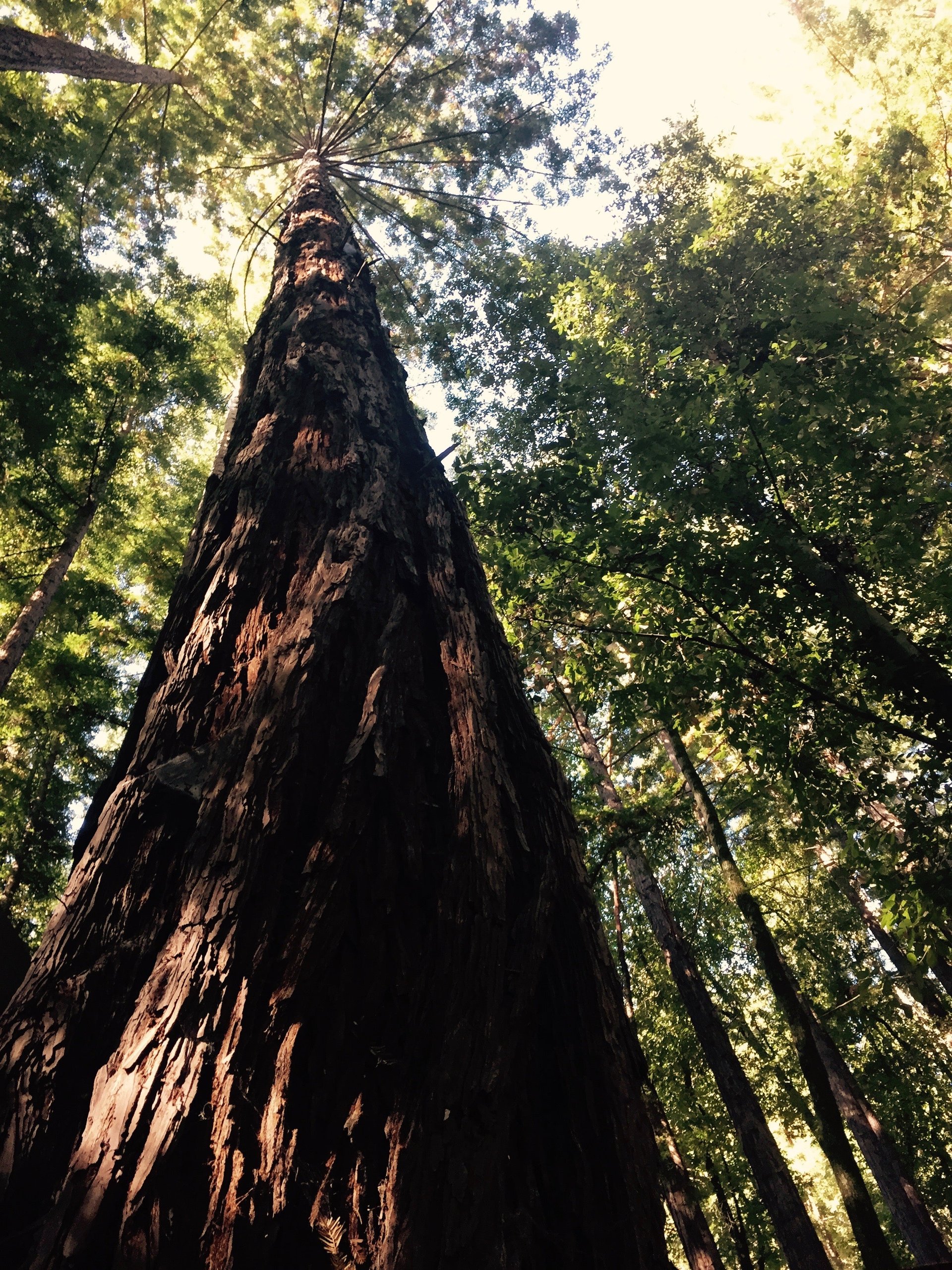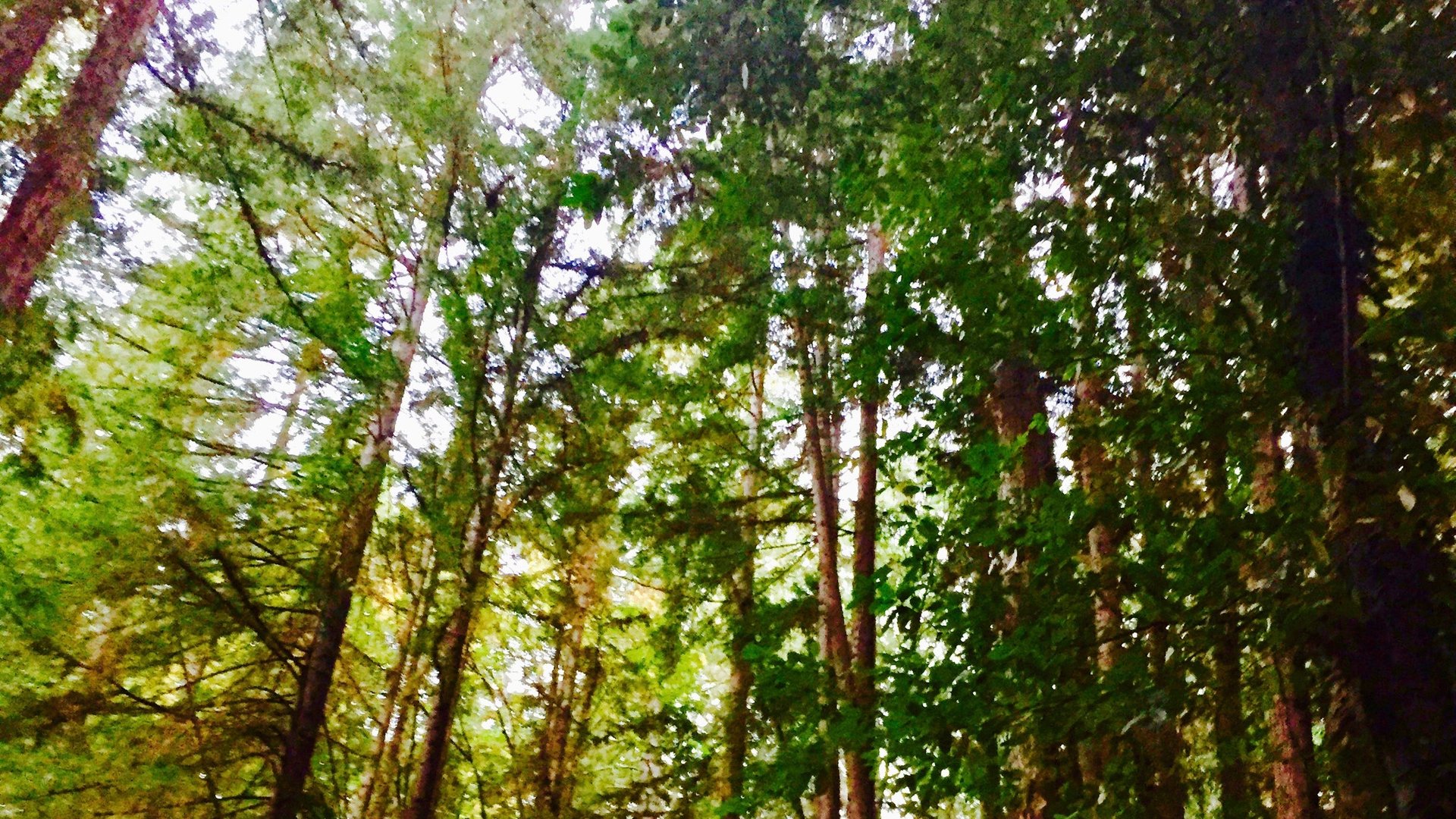A biologist believes that trees speak a language we can learn
I’m in a redwood forest in Santa Cruz, California, taking dictation for the trees outside my cabin. They speak constantly, even if quietly, communicating above- and underground using sound, scents, signals, and vibes. They’re naturally networking, connected with everything that exists, including you.


I’m in a redwood forest in Santa Cruz, California, taking dictation for the trees outside my cabin. They speak constantly, even if quietly, communicating above- and underground using sound, scents, signals, and vibes. They’re naturally networking, connected with everything that exists, including you.
Biologists, ecologists, foresters, and naturalists increasingly argue that trees speak, and that humans can learn to hear this language.
Many people struggle with this concept because they can’t perceive that trees are interconnected, argues biologist George David Haskell in his 2017 book The Songs of Trees. Connection in a network, Haskell says, necessitates communication and breeds languages; understanding that nature is a network is the first step in hearing trees talk.
For the average global citizen, living far from the forest, that probably seems abstract to the point of absurdity. Haskell points readers to the Amazon rainforest in Ecuador for practical guidance. To the Waorani people living there, nature’s networked character and the idea of communication among all living things seems obvious. In fact, the relationships between trees and other lifeforms are reflected in Waorani language.
In Waorani, things are described not only by their general type, but also by the other beings surrounding them. So, for example, any one ceibo tree isn’t a “ceibo tree” but is “the ivy-wrapped ceibo,” and another is “the mossy ceibo with black mushrooms.” In fact, anthropologists trying to classify and translate Waorani words into English struggle because, Haskell writes, “when pressed by interviewers, Waorani ‘could not bring themselves’ to give individual names for what Westerners call ‘tree species’ without describing ecological context such as the composition of the surrounding vegetation.”
Because they relate to the trees as live beings with intimate ties to surrounding people and other creatures, the Waorani aren’t alarmed by the notion that a tree might scream when cut, or surprised that harming a tree should cause trouble for humans. The lesson city-dwellers should take from the Waorani, Haskell says, is that “dogmas of separation fragment the community of life; they wall humans in a lonely room. We must ask the question: ‘can we find an ethic of full earthly belonging?’”

Haskell points out that throughout literary and musical history there are references to the songs of trees, and the way they speak: whispering pines, falling branches, crackling leaves, the steady hum buzzing through the forest. Human artists have always known on a fundamental level that trees talk, even if they don’t quite say they have a “language.”
Redefining communication
Tree language is a totally obvious concept to ecologist Suzanne Simard, who has spent 30 years studying forests. In June 2016, she gave a Ted Talk (which now has nearly 2.5 million views), called “How Trees Talk to Each Other.”
Simard grew up in the forests of British Columbia in Canada, studied forestry, and worked in the logging industry. She felt conflicted about cutting down trees, and decided to return to school to study the science of tree communication. Now, Simard teaches ecology at the University of British Columbia-Vancouver and researches “below-ground fungal networks that connect trees and facilitate underground inter-tree communication and interaction,” she says. As she explained to her Ted Talk audience:
I want to change the way you think about forests. You see, underground there is this other world, a world of infinite biological pathways that connect trees and allow them to communicate and allow the forest to behave as though it’s a single organism. It might remind you of a sort of intelligence.
Trees exchange chemicals with fungus, and send seeds—essentially information packets—with wind, birds, bats, and other visitors for delivery around the world. Simard specializes in the underground relationships of trees. Her research shows that below the earth are vast networks of roots working with fungi to move water, carbon, and nutrients among trees of all species. These complex, symbiotic networks mimic human neural and social networks. They even have mother trees at various centers, managing information flow, and the interconnectedness helps a slew of live things fight disease and survive together.
Simard argues that this exchange is communication, albeit in a language alien to us. And there’s a lesson to be learned from how forests relate, she says. There’s a lot of cooperation, rather than just competition among and between species as was previously believed.
Peter Wohlleben came to a similar realization while working his job managing an ancient birch forest in Germany. He told the Guardian he started noticing trees had complex social lives after stumbling upon an old stump still living after about 500 years, with no leaves. “Every living being needs nutrition,” Wohlleben said. “The only explanation was that it was supported by the neighbor trees via the roots with a sugar solution. As a forester, I learned that trees are competitors that struggle against each other, for light, for space, and there I saw that it’s just [the opposite]. Trees are very interested in keeping every member of this community alive.” He believes that they, like humans, have family lives in addition to relationships with other species. The discovery led him to write a book, The Hidden Life of Trees.
By being aware of all living things’ inter-reliance, Simard argues, humans can be wiser about maintaining mother trees who pass on wisdom from one tree generation to the next. She believes it could lead to a more sustainable commercial-wood industry: in a forest, a mother tree is connected to hundreds of other trees, sending excess carbon through delicate networks to seeds below ground, ensuring much greater seedling survival rates.
Foreign language studies

Seedling survival is important to human beings because we need trees. “The contributions of forests to the well-being of humankind are extraordinarily vast and far-reaching,” according to the United Nations Food and Agriculture Organization 2016 report on world forests (pdf).
Forests are key to combating rural poverty, ensuring food security, providing livelihoods, supplying clean air and water, maintaining biodiversity, and mitigating climate change, the FAO says. The agency reports that progress is being made toward better worldwide forest conservation but more must be done, given the importance of forests to human survival.
Most scientists—and trees—would no doubt agree that conservation is key. Haskell believes that ecologically friendly policies would naturally become a priority for people if we’d recognize that trees are masters of connection and communication, managing complex networks that include us. He calls trees “biology’s philosophers,” dialoguing over the ages, and offering up a quiet wisdom. We should listen, the biologist says, because they know what they’re talking about. Haskell writes, “Because they are not mobile, to thrive they must know their particular locus on the Earth far better than any wandering animal.”